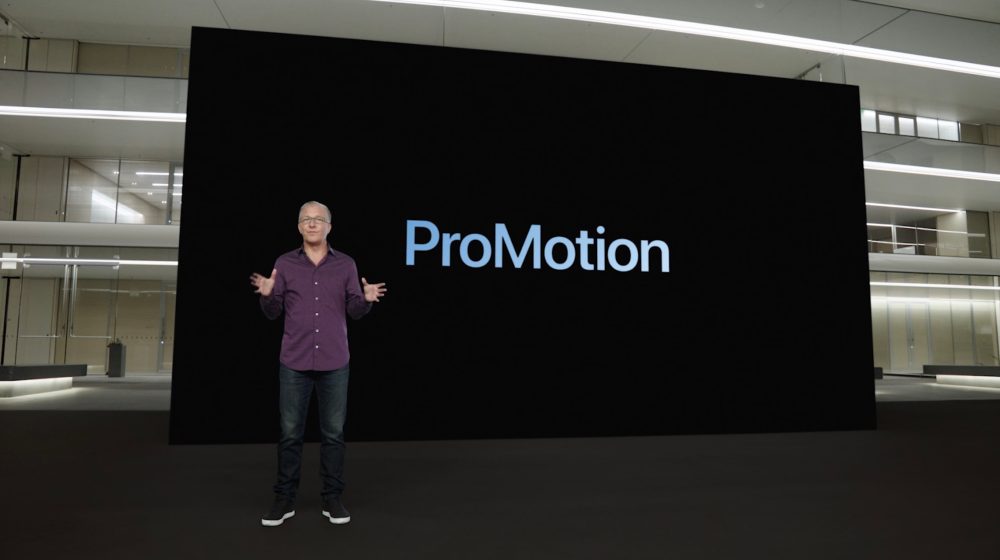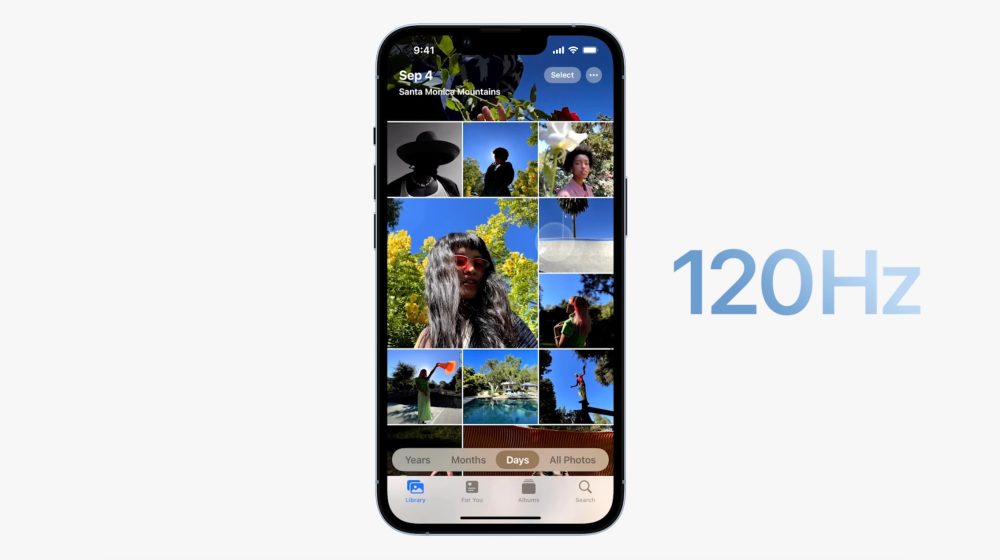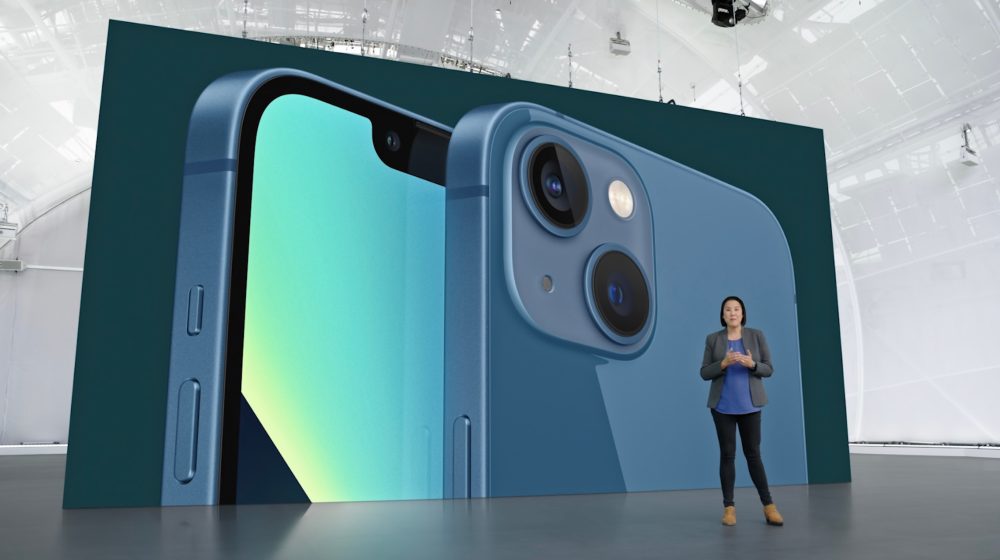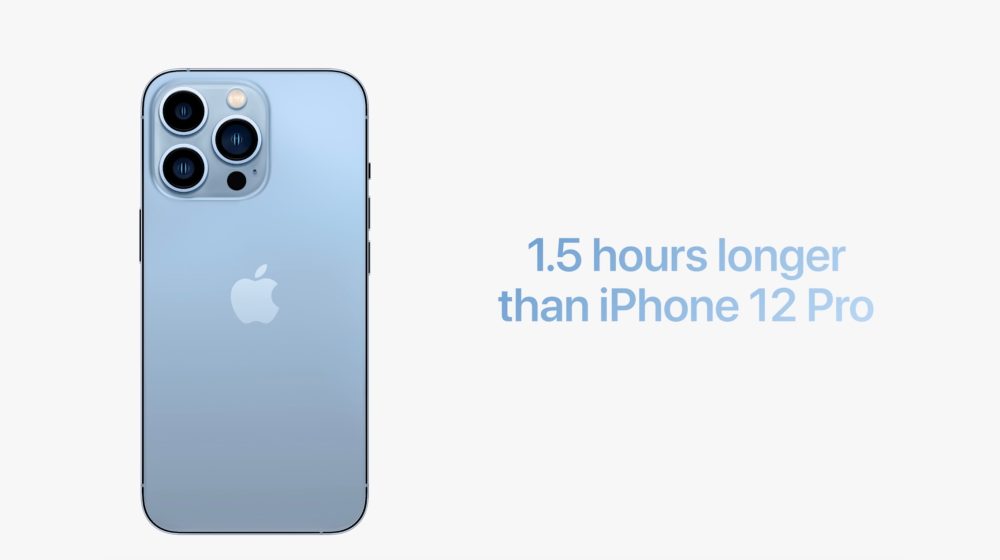
The all-new iPhone 13 lineup is officially here. As has become the norm, the lineup is split into the iPhone 13 and iPhone 13 Pro. On the surface, the iPhone 13 and iPhone 13 Pro are very similar phones. They both feature a 6.1-inch display and the A15 Bionic processor inside, but look closer and you’ll notice some key differences.
If you’re trying to make a buying decision between the iPhone 13 and iPhone 13 Pro, head below for everything you need to know about the iPhone 13 vs iPhone 13 Pro comparison.
Table of contents
In this comparison, we focus specifically on the 6.1-inch iPhone 13 and the 6.1-inch iPhone 13 Pro. There are many similarities between the iPhone 13 mini and iPhone 13, and the iPhone 13 Pro Max, but there are also some key differences. Stay tuned to 9to5Mac over the coming days and weeks for additional comparisons between Apple’s iPhone lineup as it stands today.
iPhone 13 vs iPhone 13 Pro: Display

The iPhone 13 and iPhone 13 Pro feature 6.1-inch Super Retina XDR displays using OLED technology with a resolution of 2532 x 1170 pixels. This equals 460 pixels per inch. The iPhone 13 Pro, however, features a max brightness of 1000 nits, compared to the iPhone 13’s at 800 nits. For HDR content, however, both can reach a max brightness of 1200 nits.
There is one major difference between the iPhone 13 and iPhone 13 Pro displays: ProMotion technology. Exclusive to the iPhone 13 Pro, Apple’s ProMotion display technology brings adaptive refresh rates up to 120Hz to the iPhone for the first time. This means the refresh rate of the iPhone 13 Pro’s screen can scale between 10Hz and 120Hz depending on what you’re doing on your device.

In real-world usage, this should mean things like scrolling and animations are significantly smoother. ProMotion also makes the display more efficient because it can scale all the way down to 10Hz when you’re doing something such as reading.
Other display features on the iPhone 13 and iPhone 13 Pro include:
- 2,000,000:1 contrast ratio
- True Tone display
- Wide color gamut (P3)
- Haptic Touch
- HDR display
Design
In terms of design, the iPhone 13 and iPhone 13 Pro are similar, with flat edges and nearly edge-to-edge displays. Both devices also feature slightly smaller notches at the top, which measure in at roughly 20% smaller in terms of width.
One major difference is that the iPhone 13 is made out of what Apple refers to as “aerospace-grade aluminum” while the iPhone 13 Pro is made from “surgical-grade stainless steel.” This means that the iPhone 13 has a brushed aluminum finish, while the iPhone 13 Pro features a shiny stainless finish.
The difference in materials makes the iPhone 13 Pro slightly heavier than the iPhone 13. The iPhone 13 weighs in at 6.14 ounces (174 grams), while the iPhone 13 Pro weighs in at 7.19 ounces (204 grams).
The dimensions are the same between the iPhone 13 Pro and iPhone 13 :
- Height: 5.78 inches (146.7 mm)
- Width: 2.82 inches (71.5 mm)
- Thickness: 0.30 inches (7.65 mm)
The iPhone 13 and iPhone 13 Pro are both rated for IP68 splash, water, and dust resistance. Under this rating, the iPhone 13 and iPhone 13 Pro can withstand submersion to a maximum depth of 6 meters for up to 30 minutes.
Best iPhone 13 cases:
- TORRAS Slim Fit Compatible for Phone 13 Pro
- Caseology Vault Protective Case for iPhone 13 Pro
- Benjolf Clear Case for iPhone 13 Pro
Performance and battery life

The iPhone 13 and iPhone 13 Pro are both powered by an A15 Bionic processor, packing a 6-core CPU with 2 performance and 4 efficiency cores. The A15 Bionic processor also features a new 16-core Neural Engine to power machine learning and artificial intelligence tasks.
One difference between the iPhone 13 and iPhone 13 Pro is that the former features a 4-core GPU, while the latter features a 5-core CPU. It remains to be seen what kind of difference this leads to in real-world performance, but it is a notable change for Apple to be segmenting the iPhone 13 lineup in this way for the first time.
Apple has not made any changes to the RAM configuration this year, with the iPhone 13 packing 4GB of RAM and the iPhone 13 Pro packing 6GB of RAM.

Both the iPhone 13 and iPhone 13 Pro feature notable improvements in battery life this year compared to their predecessors. The iPhone 13 Pro is able to edge out the iPhone 13 in some areas, according to Apple’s claims.
iPhone 13 battery estimates:
- Audio playback: 75 hours
- Video playback (streamed): Up to 15 hours
- Video playback: Up to 19 hours
iPhone 13 Pro battery estimates:
- Audio playback: 75 hours
- Video playback (streamed): Up to 20 hours
- Video playback: Up to 22 hours
Both devices support fast charging, for getting up to a 50% charge in 30 minutes with a 20W power adapter. There’s also support for 7.5W Qi wireless charging and 15W wireless charging when using a MagSafe wireless charger.
Connectivity
Have you heard the great news about 5G? Just like their predecessors, the iPhone 13 and iPhone 13 Pro both feature support for 5G. Apple says this makes for “superfast downloads and high-quality streaming.” This includes support for mmWave 5G connectivity in the United States, as well as sub-6GHz 5G in the United States and other countries.
Camera

Where you really start to notice differences between the iPhone 13 and iPhone 13 Pro, however, is the camera technology. The iPhone 13 features a dual 12MP camera system with Wide and Ultra Wide cameras on the back. On the front, you’ll find a 12MP f/2.2 aperture selfie camera.
Here are the full camera features for the iPhone 13:
- Dual 12MP camera system: Wide and Ultra Wide cameras
- Wide: ƒ/1.6 aperture
- Ultra Wide: ƒ/2.4 aperture and 120° field of view
- 2x optical zoom out
- Digital zoom up to 5x
- Portrait mode with advanced bokeh and Depth Control
- Portrait Lighting with six effects (Natural, Studio, Contour, Stage, Stage Mono, High‑Key Mono)
- Sensor‑shift optical image stabilization (Wide)
- Seven‑element lens (Wide); five‑element lens (Ultra Wide)
- True Tone flash with Slow Sync
- Panorama (up to 63MP)
- Sapphire crystal lens cover
- 100% Focus Pixels (Wide)
- Night mode
- Deep Fusion
- Smart HDR 4
- Photographic Styles
- Wide color capture for photos and Live Photos
- Lens correction (Ultra Wide)
- Advanced red‑eye correction
- Auto image stabilization
- Burst mode
- Photo geotagging
- Image formats captured: HEIF and JPEG
Meanwhile, the iPhone 13 Pro features a triple-lens camera system on the back plus a LiDAR Scanner. The triple-lens camera setup features Telephoto, Wide, and Ultra Wide cameras. On the front, you’ll find the same 12MP camera with an f/2.2 aperture.
Here are the full camera features for the iPhone 13 Pro:
- Pro 12MP camera system: Telephoto, Wide, and Ultra Wide cameras
- Telephoto: ƒ/2.8 aperture
- Wide: ƒ/1.5 aperture
- Ultra Wide: ƒ/1.8 aperture and 120° field of view
- 3x optical zoom in, 2x optical zoom out; 6x optical zoom range
- Digital zoom up to 15x
- Night mode portraits enabled by LiDAR Scanner
- Portrait mode with advanced bokeh and Depth Control
- Portrait Lighting with six effects (Natural, Studio, Contour, Stage, Stage Mono, High‑Key Mono)
- Dual optical image stabilization (Telephoto and Wide)
- Sensor‑shift optical image stabilization (Wide)
- Six‑element lens (Telephoto and Ultra Wide); seven‑element lens (Wide)
- True Tone flash with Slow Sync
- Panorama (up to 63MP)
- Sapphire crystal lens cover
- 100% Focus Pixels (Wide)
- Night mode
- Deep Fusion
- Smart HDR 4
- Photographic Styles
- Macro photography
- Apple ProRAW
- Wide color capture for photos and Live Photos
- Lens correction (Ultra Wide)
- Advanced red‑eye correction
- Photo geotagging
- Auto image stabilization
- Burst mode
- Image formats captured: HEIF and JPEG
Video recording

In terms of video recording, both the iPhone 13 and iPhone 13 Pro support up to 4K video recording at 24 fps, 25 fps, 30 fps, or 60 fps as well as HDR video recording with Dolby Vision up to 4K at 60 fps. Both devices also feature Cinematic mode for recording videos with shallow depth of field at 1080p at 30 fps.
One notable difference, however, is that the iPhone 13 Pro packs support for Apple’s ProRes video recording standard at up to 4K at 30 fps (1080p at 30 fps for 128GB storage). This is a major feature for professional videographers looking to get the highest quality and lowest compression possible.
Colors, storage, and pricing
- AT&T – Save up to
- Verizon – Save up to
- T-Mobile – Running a
The iPhone 13 is available in five different colors: midnight, starlight, blue, red, and pink. The iPhone 13 Pro is available in four different colors: silver, graphite, gold, and sierra blue.
In terms of pricing, the iPhone 13 retails for:
- $799 for 128GB of storage
- $899 for 256GB of storage
- $999 for 512GB of storage
Pricing for the iPhone 13 Pro is as follows:
- $999 for 128GB of storage
- $1099 for 256GB of storage
- $1299 for 512GB of storage
- $1499 for 1TB of storage
Included accessories
Citing environmental concerns, Apple is no longer including headphones or a charging brick in the iPhone 13 box this year. Here are some accessories you might consider picking up to help fill that gap and complement your new iPhone.
- Native Union Drop 10W Qi Charger
- Anker 30W USB-C wall charger
- USB-C to Lightning cable
- Lightning to 3.5mm headphone adapter or cable
iPhone 13 vs iPhone 13 Pro features
| iPhone 13 | iPhone 13 Pro | |
| Display | 6.1-inch Super Retina XDR OLED | 6.1-inch Super Retina XDR OLED |
| ProMotion Display | ❌ | ✅ |
| Finish | Aluminum | Stainless Steel |
| Processor | A15 Bionic | A15 Bionic |
| RAM | 4GB | 6GB |
| CPU cores | 6 cores | 6 cores |
| GPU cores | 4 core | 5 core |
| Durability | IP68 | IP68 |
| Battery life | Up to 19 hours video | Up to 22 hours video |
| Camera | Dual-lens 12MP | Triple-lens 12MP |
| Optical zoom range | 2x | 6x |
| Video | Dolby Vision HDR up to 4K at 60 fps | Dolby Vision HDR up to 4K at 60 fps |
| LiDAR | ❌ | ✅ |
| ProRes | ❌ | ✅ |
| ProRAW | ❌ | ✅ |
| Cinematic mode | ✅ | ✅ |
| 5G | ✅ | ✅ |
| Weight | 6.14 ounces (174 grams) | 7.19 ounces (204 grams) |
| Storage | 128GB, 256GB, 512GB | 128GB, 256GB, 512GB, 1TB |
| Pricing | From $799 | From $999 |
Wrap up

As you can see, the iPhone 13 and iPhone 13 Pro share many similarities in terms of size, form factor, and performance. With that being said, there are some notable differences this year in the camera category as well as in the display category.
Unlike last year when the iPhone 12 and iPhone 12 Pro featured the same display technology, the iPhone 13 Pro exclusively features the new ProMotion display technology. The iPhone 13 Pro also packs a more impressive camera setup with ProRes video recording, a triple-lens design, and more.
But ultimately, for most people, the iPhone 13 is enough: it can handle virtually any task you throw at it and it features a stunning design available in 5 different colors. The camera, while not as impressive as the iPhone 13 Pro, can still take stunning images and videos.
Those who should opt for the iPhone 13 Pro include people who take professional-level video and can take advantage of the ProRes video recording features. Those people should also opt for higher storage capacities as well.
What do you think of the iPhone 13 vs. iPhone 13 Pro? Does Apple do enough to justify the $200 premium for the iPhone 13 Pro? Are you planning on upgrading this year? Let us know down in the comments.
Author: Chance Miller
Source: 9TO5Google



